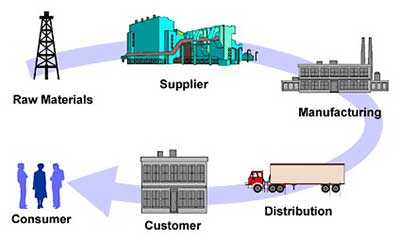Relevance: GS-3: Indian Economy and issues relating to planning, mobilization, of resources, growth, development and employment.
Key Phrases: DPIIT, organisational training, upskilling, PM-Kaushal Vikas Yojana, structural framework, Skill Council initiative.
Context:
- Despite logistics sector contribution to the country’s economic growth, many neglect its structural fragmentation.
- This is because, in recent times, people have come to perceive the sector merely as an outcome of infrastructure and technology.
Do you Know?
- The Logistics Performance Index (LPI) is a logistics capacity index which analyses differences between countries in terms of customs procedures, logistics costs and the quality of the infrastructure for overland and maritime transport.
- World Bank ranks countries based on their logistics performance.
- India ranks 44 in the Logistics Performance Index 2018 out of 160 countries.
- Germany ranks 1st according to LPI 2018.
Logistics Sector:
- The sector is a combination of physical infrastructure, technological adoption and human capacity at once interlinked with and interdependent of each other.
- Human capacities here would mean the various components of human interaction that shape the sector’s economic value.
- From the managerial jobs to even the core occupation of on-ground executives, the sector has always gone higher and higher in terms of generating employment.
- This is because, over the past few years, there have been considerable transitions in the economy.

Need For Robust Logistics Sector:
- Back-bone of any economy: Logistics is the backbone of any economy as it affects all end-user industries in general and is very important for all three sectors of the economy: agriculture, manufacturing and the service industry.
- The logistics market amounts to 13% of GDP and is estimated to be at US$ 4 Trillion worldwide.
- The current logistics market in India is about $250bn.
- Handful of large organized players: The Indian market is nascent, meaning there are only a handful of large organized players across various segments of logistics.
- In a $250 bn industry, we don’t have even a single player with more than $2bn revenues whereas we should have at least 10-15 players with revenues in excess of $5 bn each.
Government Initiatives to boost Logistic Sector in India:
- The DPIIT (Department for Promotion of Industry and Internal Trade) has provided an independent focus on the logistic sector now.
- In terms of taking responsibility to skill and re-skill, the government has already been working independently through various policy initiatives such as the PM-Kaushal Vikas Yojana (PMKVY).
- Big thrust on highways build-up.
- Dedicated freight corridor.
- Make in India
Key Challenges:
- Reluctance within the industry:
- There is a reluctance within the industry to invest in the sector’s human development or enhance its social value.
- A number of underlying issues such as intense work environments, low compensation and minimal welfare benefits are yet to be formally addressed within the informal segments of the sector.
- Such issues not only discourage creating career aspirations but also stereotype certain roles into society. For instance, many might choose to stay unemployed rather than take up the role of truck driver.
- Lower employment security:
- There often exists a perception about the sector’s low employment security.
- This comes from the industry’s preference to replace the experienced workforce with younger employees who can often be sourced for a lower wage.

- Yet to create a structural framework:
- Necessary changes have never taken a stronger pace in this sector since many of our sectoral enterprises are yet to create a structural framework that would ensure adequate resource allocation towards workforce development.
Way Forwards:
- Create independent skill councils:
- Create independent skill councils that take periodic reviews over upcoming skill requirements.
- Inspirations could be taken from many international frameworks such as the UK’s 2004 Skill Council initiative of employers in this regard.
- Collaborate with state or state supported institutions:
- Collaborate with state or state supported institutions that would be able to give students a wider perspective of the logistics sector.
- A relevant example would be of Germany that has been able to devise a Dual Vocational Education and Training Programme that inculcates industry training in academic curriculum.
- By experiencing the logistics sector firsthand, students get a wider perspective over the many forms of employment and the industry is also able to source candidates that have been trained specifically to the sector, thereby ensuring a connection between employability and actual employment.
- Implement Welfare Components:
- Based on their capacity, several long-term welfare components such as overtime allowances, outstation amenities, healthcare benefits and family insurances could be brought in for the existing workforce.
- Focus on operational efficiencies:
- Strong operational involvement & tech-enablement leads to faster (Turn Around Time) TAT, higher asset utilization and increasing share of wallet.
- Good Opportunity for start-ups:
- At present start-ups are likely to have less resistance from large established traditional players to deal with and have huge headroom for growth from existing market itself.
Conclusion:
- The enterprises, more so in the private sector, should now realise that they have a greater role to play in bringing about efficiency into India’s logistics sector.
- Adequate resource allocation for development of human resource and their optimal utilisation rather than a single-minded emphasis on efficiency will enable the logistics sector contribute much towards an inclusive economic growth.
Source: The Hindu BL
Mains Question:
Q. Why does Logistics workforce need a paradigm shift? Discuss (150 words).







